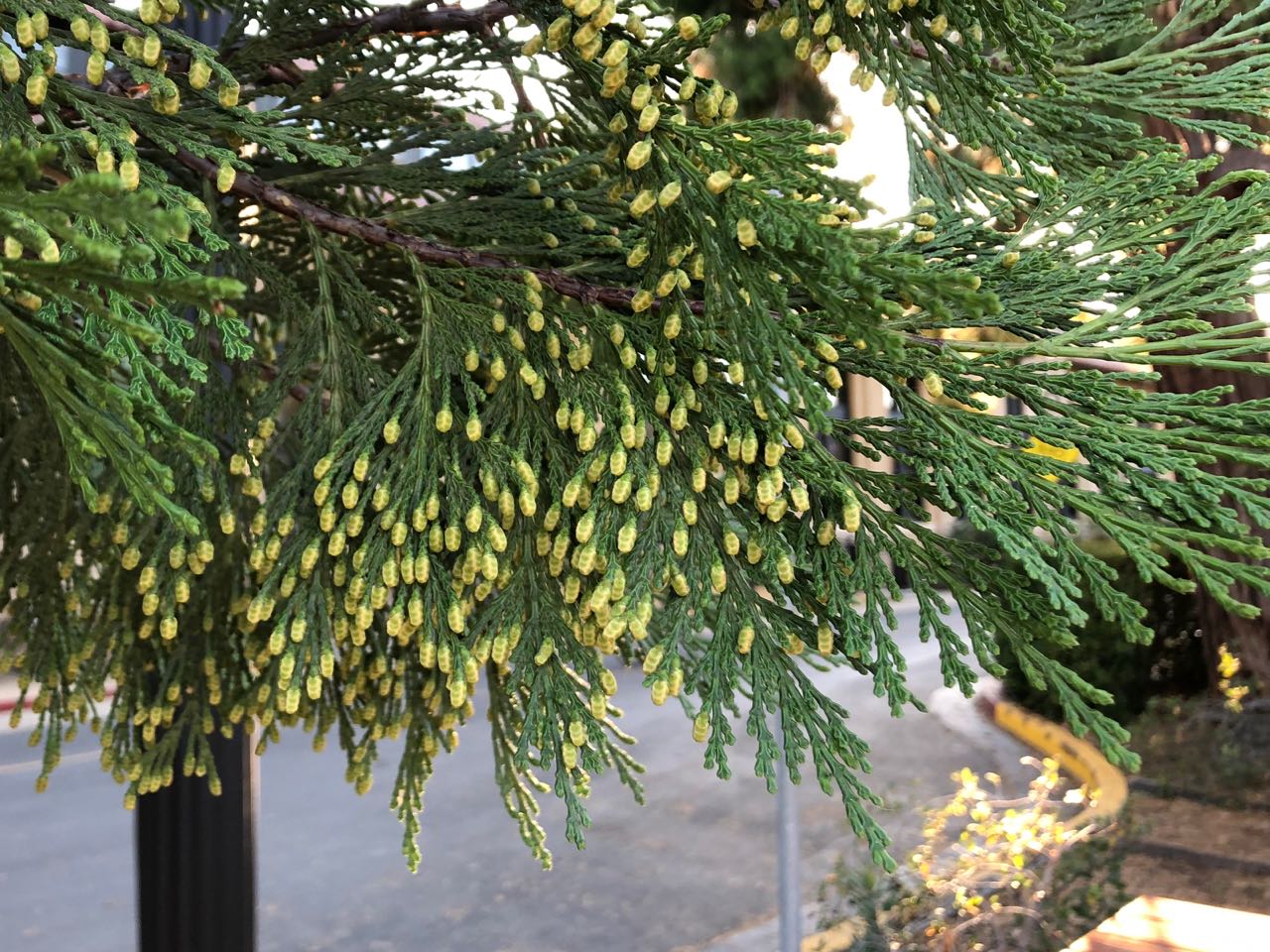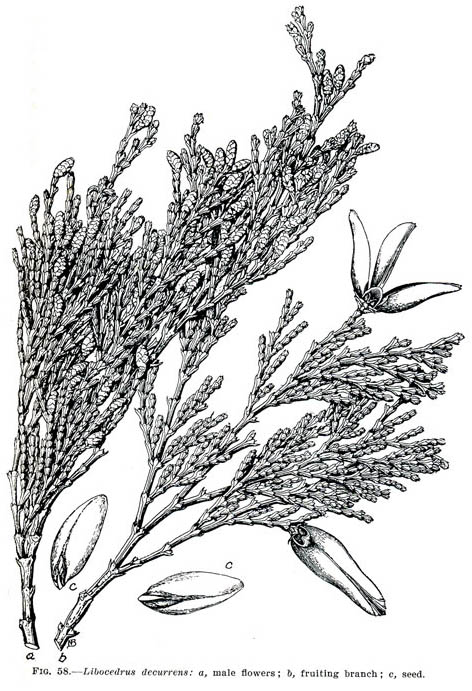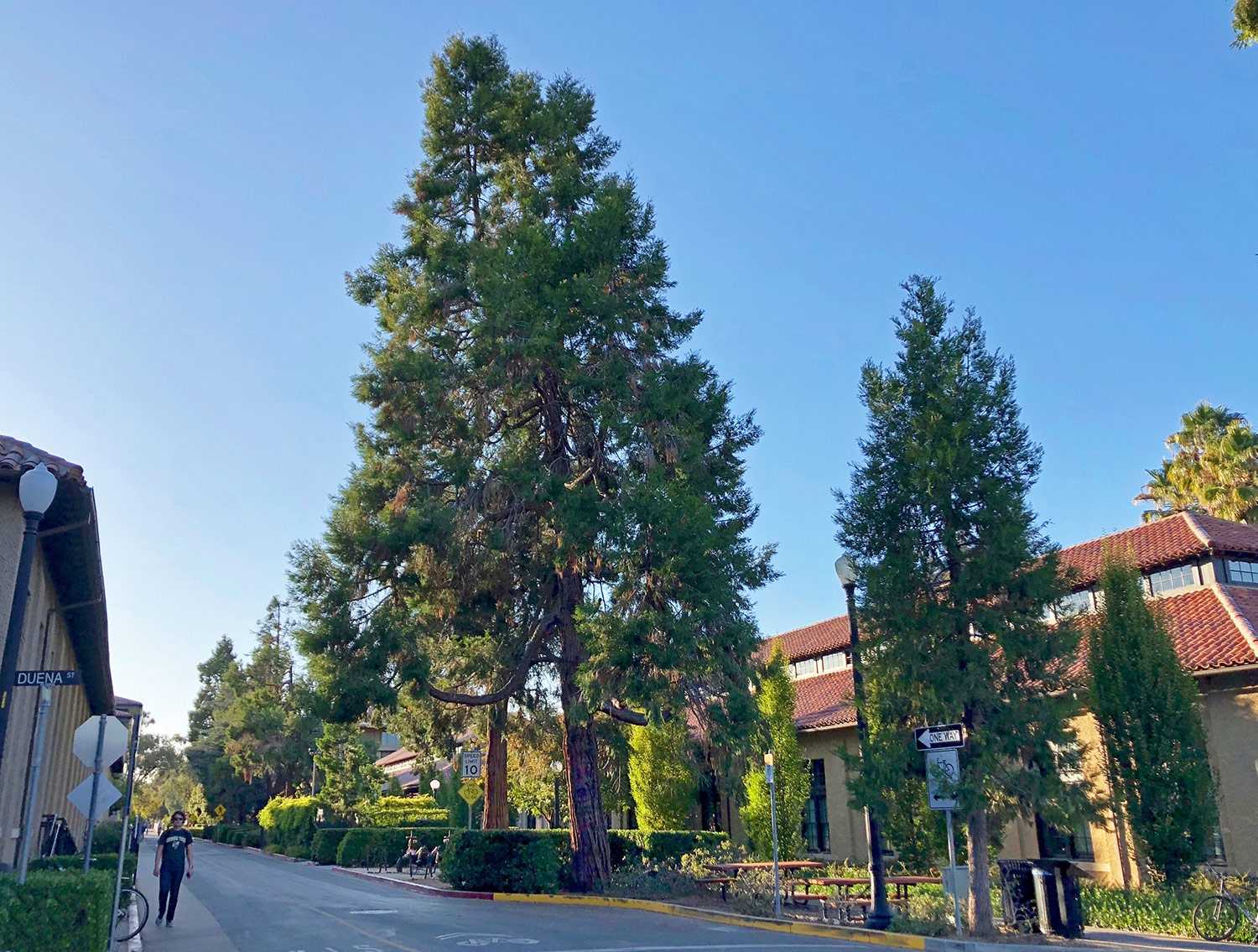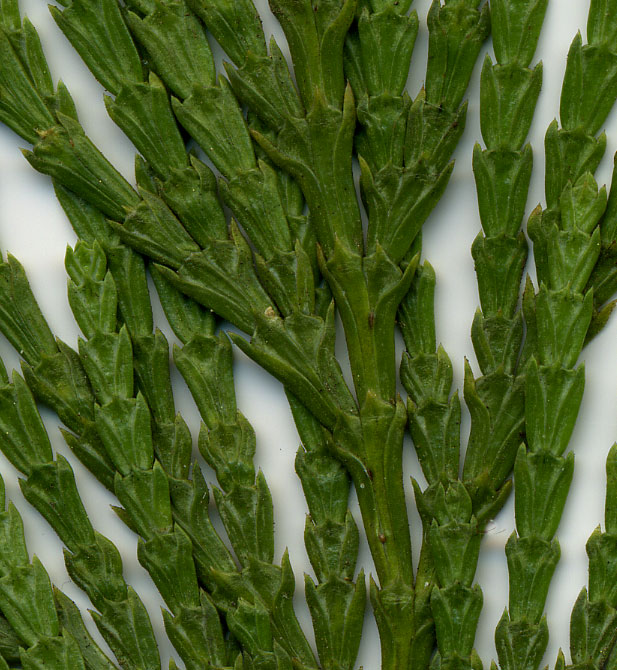Calocedrus decurrens
 incense cedar
incense cedar

The incense cedar is familiar to many in its natural habitat around 6000 feet, for example at Stanford Sierra Camp on Fallen Leaf Lake, where enormous examples over 3 feet in diameter with deeply furrowed cinnamon bark abound and reach ages of several centuries. Ancient fire that decimated the white firs and Jeffrey pines scarred but did not wipe out the cedars. You can’t help viewing them with reverence.
By comparison, the ones on formerly drought-stricken Panama Mall are unimpressive. Young trees are very decorative, and may also be seen on Panama Mall. At this stage they resemble Thuja in having the small scale-like leaves arranged in flat sprays, but can be distinguished by noting that the leaves run down the twigs at the place of attachment. Pollen-bearing yellow cones bring color to the tips of the leaf sprays. Seed-bearing cones about an inch long have only five scales and release winged seeds in August, sometimes in heavy quantities that leave the sidewalk speckled with oil spots where the seeds have been trodden on.

Young trees are on the hill between Stanford Avenue and Raimundo Way. Two dozen large specimens appeared on the Cedar Terrace (south end of the Science and Engineering Quad) in 1999, exhibiting pollen-bearing cones in 2000. What with additions in 2003 to make a total of 30, a mighty grove is on its way. In Palo Alto, a mighty specimen is at 327 Tennyson Avenue.
Incense cedar and Sequoiadendron giganteum typically grow well on campus for a few decades into beautiful young trees before their leader branches suffer wilting and dieback from Botryosphaeria canker.
Name derivation: Calocedrus – Greek kalos (beautiful) and cedrus (cedar); decurrens – running down the stem (the green leaf bases).
About this Entry: The main text of this entry is from the book Trees of Stanford and Environs, by Ronald Bracewell, published 2005. John Rawlings added the note on Botryosphaeria. Sairus Patel replaced references to flowers with cones, and to Santa Teresa Street with Panama Mall (Sep 2019).





